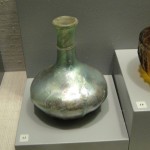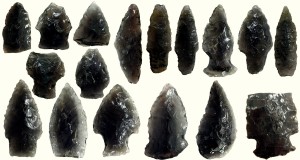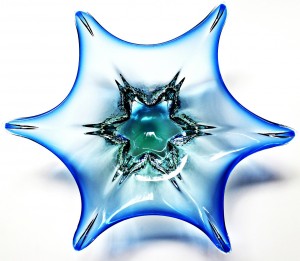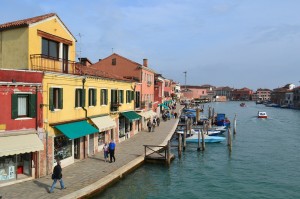Glass from the Stone Age until Glasstic
Glass is a widely used item in the modern world but did you know that glass has been around over 5000 years? Glass was once the object of only a few due to its great cost but with the advent of ‘Glass Blowing’ between 30 BC and 1 AD glass began to spread and become available to many more people for many more uses.2,3 The following brief history outlines some of the high points of the evolution of the material that ultimately became the main ingredient, the recyclable glass bottle insert, in the Glasstic Shatterproof Glass Water Bottle.
Research indicates that glass was invented sometime between 2000 BC and 3000 BC in either Egypt or Mesopotamia (today parts of Syria, Turkey and Iraq) and it is likely that the first man made glass was used in sculpture making in Egypt1. Before this time it is known that man used natural glass, Obsidian, for as many as a 700,0005 or more years to craft sharp blades, arrow heads and other tools during much of the Stone Age period. Examples of Obsidian Tools and sources of Obsidian can be found all around the world.4
By the 1st Century AD glass objects were beginning to become a little more common due to the discovery of Glass Blowing using a blowpipe. This same technique is used today by crafts men and women to make beautiful hand blown glass vases for example. It is believed that this practice was first developed in what is now modern day Syria3. Glass production techniques continued to evolve during the time of the fall of the Roman Empire and through the first 1000 years AD with strong influences by Muslims during the time they conquered parts of Europe.1
Around the 13th Century glass production in Europe was centered around Venice, Italy on Murano Island where a famous type of glass, ‘Cristallo’, was developed by Angelo Barovier3. The techniques used there began to spread across Europe during the next several hundred years. In 1674 an Englishmen named George Ravenscroft patented6 the process for creating lead glass. Over the next several hundred year’s different breakthroughs like Polished Plate Glass, Crystal Glass and Early Float Glass took place then in 1903 American Inventor Michael J. Owens created the first automated glass blowing machine3,7. This allowed for the mass production of completely uniform glass bottles like we think of today. The Glass Bottle Insert in the Glasstic Shatterproof Glass Water Bottle is made on equipment from Germany that follows many of the same principals as this original machine. In 1959, a British Glass Maker, Sir Alastair Pilkington, invented the process for creating Float Glass that is used today in 90% of the flat glass produced around the world for such important things as windows for cars and mirrors.
We hope you enjoy glass as much as we do at Glasstic Bottle Co., we would love to hear about your love of glass or your thoughts about this article in the comments section below.
Also, a great interactive resource, Timeline of Glass History, from the Corning Museum of Glass shows some incredible examples of different glass sculptures, glass vases, glass bowls, glass cups, glass bottles as they evolved over thousands of years. It is worth checking out in our opinion.
Glass: A Brief History of Glass References:
- The Corning Museum of Glass ‘Timeline of Glass History’
- Cornell University, ‘History of Glass’
- History of Glass’ ‘The History of Glass Making’
- S Bunny. American trade routes for obsidian. New Scientist (1985-04-18).
- HV Merrick, FH Brown, WP Nash. ‘Society, Culture, and Technology in Africa, Volume 11, 1994’ (Masca Research Papers in Science and Archaeology Supplement to Vol 11, 1994) University of Pennsylvania, ISBN 1931707057
- MacLeod, C. (1987). “Accident or Design?: George Ravenscroft’s Patent and the Invention of Lead Crystal”.Technology and Culture (Society for the History of Technology) 28 (4): 776–803. doi:2307/3105182. JSTOR 3105182
- Toledo Museum of Art, ‘Michael Owens invents the automatic bottle-blowing machine (Toledo, Ohio) ’
- https://ancientglass.wordpress.com/museums-glass-collections-and-exhibitions/ancient-roman-glass-at-the-princeton-university-art-museum/#jp-carousel-3894





